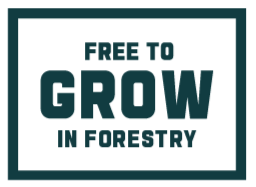 After much reflection on what is best to fulfill the mission of the Free to Grow in Forestry initiative, the Canadian Institute of Forestry / Institut forestier du Canada and Centre for Social Intelligence have decided to consolidate the management of it so as to create efficiencies and regular communications for our followers. Free to Grow in Forestry (FTGF) will build off the Canadian efforts to-date, maintaining those relations, while also expanding into the global arena. To that end, you will now see a refreshed Free to Grow in Forestry website. …At FTGF, we recognize that workplace culture issues (such as harassment, bullying, undermining, abuse of power, destruction of workplace relationships) are the primary reason people leave the forest sector – making it difficult to attract and retain top talent. The resources above aim to address these issues and support inclusive workplaces. Stay tuned for the September newsletter!
After much reflection on what is best to fulfill the mission of the Free to Grow in Forestry initiative, the Canadian Institute of Forestry / Institut forestier du Canada and Centre for Social Intelligence have decided to consolidate the management of it so as to create efficiencies and regular communications for our followers. Free to Grow in Forestry (FTGF) will build off the Canadian efforts to-date, maintaining those relations, while also expanding into the global arena. To that end, you will now see a refreshed Free to Grow in Forestry website. …At FTGF, we recognize that workplace culture issues (such as harassment, bullying, undermining, abuse of power, destruction of workplace relationships) are the primary reason people leave the forest sector – making it difficult to attract and retain top talent. The resources above aim to address these issues and support inclusive workplaces. Stay tuned for the September newsletter!
 …calls are growing for Canada to change how it prepares for, reacts and responds to the natural disasters. Experts say Ottawa needs to rethink how it deals with wildfires… Ken McMullen, the president of the Canadian Association of Fire Chiefs, which represents municipal firefighters, has been calling for the creation of a national fire administration. …When asked by CBC News if the federal government will create a new entity or program to improve wildfire response, federal Emergency Management Minister Eleanor Olszewski said it is one idea under consideration. …While suppression is critical, Yolanda Clatworthy, the interim director of the Mitigating Wildfire Initiative, argues that it does not address the root cause of the wildfire crisis. …She said mitigation and prevention work can include choosing where homes are built, how communities are protected, how forests are managed, as well as supporting Indigenous fire stewardship and moving away from fossil fuel expansion.
…calls are growing for Canada to change how it prepares for, reacts and responds to the natural disasters. Experts say Ottawa needs to rethink how it deals with wildfires… Ken McMullen, the president of the Canadian Association of Fire Chiefs, which represents municipal firefighters, has been calling for the creation of a national fire administration. …When asked by CBC News if the federal government will create a new entity or program to improve wildfire response, federal Emergency Management Minister Eleanor Olszewski said it is one idea under consideration. …While suppression is critical, Yolanda Clatworthy, the interim director of the Mitigating Wildfire Initiative, argues that it does not address the root cause of the wildfire crisis. …She said mitigation and prevention work can include choosing where homes are built, how communities are protected, how forests are managed, as well as supporting Indigenous fire stewardship and moving away from fossil fuel expansion. Both Canada and Australia have experienced megafires in the past few years, the size and severity of which have been unprecedented. It has been suggested that Canada needs to “fight fire with fire” in order to solve the problem, and follow Australia’s lead in tackling this national environmental issue. Wrong. Rather, it is critically important that Canada does not repeat the mistakes that Australia has made. The widespread application of prescribed burning or hazard-reduction burning has been proposed as a way to protect people and property in Canada. Prescribed burning to reduce fire hazards has been employed throughout large parts of Australia. Yet robust scientific evidence showing that it is effective is remarkably limited. In some places, prescribed burning can reduce fire severity and restrict fire spread for a few years, but afterwards the regrowing vegetation becomes more flammable – an increased fire-risk effect that can last for many decades. That is: short-term gain, but long-term pain.
Both Canada and Australia have experienced megafires in the past few years, the size and severity of which have been unprecedented. It has been suggested that Canada needs to “fight fire with fire” in order to solve the problem, and follow Australia’s lead in tackling this national environmental issue. Wrong. Rather, it is critically important that Canada does not repeat the mistakes that Australia has made. The widespread application of prescribed burning or hazard-reduction burning has been proposed as a way to protect people and property in Canada. Prescribed burning to reduce fire hazards has been employed throughout large parts of Australia. Yet robust scientific evidence showing that it is effective is remarkably limited. In some places, prescribed burning can reduce fire severity and restrict fire spread for a few years, but afterwards the regrowing vegetation becomes more flammable – an increased fire-risk effect that can last for many decades. That is: short-term gain, but long-term pain. OTTAWA — Corey Hogan, Parliamentary Secretary to the Honourable Tim Hodgson, Minister of Energy and Natural Resources, announced an investment of $540,300 for two projects through the Government of Canada’s Fighting and Managing Wildfires in a Changing Climate Program (FMWCC) – Training Fund. The funding includes: $335,000 to Yorkton Tribal Council in Yorkton, Saskatchewan… [and] $204,800 to the Rural Municipality of Piney, Manitoba. Through this investment, community members in Manitoba and Saskatchewan — two provinces that have faced severe wildfire conditions this year — will receive wildland firefighting training to enhance their communities’ capacity to prepare and respond to wildfires. …The addition of these 95 trainees has us on track to train over 2,800 wildland firefighters in
OTTAWA — Corey Hogan, Parliamentary Secretary to the Honourable Tim Hodgson, Minister of Energy and Natural Resources, announced an investment of $540,300 for two projects through the Government of Canada’s Fighting and Managing Wildfires in a Changing Climate Program (FMWCC) – Training Fund. The funding includes: $335,000 to Yorkton Tribal Council in Yorkton, Saskatchewan… [and] $204,800 to the Rural Municipality of Piney, Manitoba. Through this investment, community members in Manitoba and Saskatchewan — two provinces that have faced severe wildfire conditions this year — will receive wildland firefighting training to enhance their communities’ capacity to prepare and respond to wildfires. …The addition of these 95 trainees has us on track to train over 2,800 wildland firefighters in  As wildfires scorch Canada amid its second-worst wildfire season on record, Indigenous leaders and experts say the country’s approach remains reactive — leaving Indigenous communities disproportionately vulnerable. At a Monday press conference, federal officials reported that 707 wildfires are currently active nationwide. The extreme fire activity has strained firefighting resources, prompting Canada to deploy over 560 international firefighters from six countries alongside Canadian personnel. This situation is particularly dire for Indigenous communities. Jen Baron, a postdoctoral researcher and incoming assistant professor at the University of BC’s Centre for Wildfire Coexistence, said… Many First Nations communities are “overexposed and underserved.” Remote, fly-in communities with minimal access routes face significant risks in evacuation and recovery. The infrastructure gaps make an already dangerous situation much worse, Baron said. Some federal investments have targeted these gaps. This week, officials announced a $540,000 commitment to two wildfire training programs.
As wildfires scorch Canada amid its second-worst wildfire season on record, Indigenous leaders and experts say the country’s approach remains reactive — leaving Indigenous communities disproportionately vulnerable. At a Monday press conference, federal officials reported that 707 wildfires are currently active nationwide. The extreme fire activity has strained firefighting resources, prompting Canada to deploy over 560 international firefighters from six countries alongside Canadian personnel. This situation is particularly dire for Indigenous communities. Jen Baron, a postdoctoral researcher and incoming assistant professor at the University of BC’s Centre for Wildfire Coexistence, said… Many First Nations communities are “overexposed and underserved.” Remote, fly-in communities with minimal access routes face significant risks in evacuation and recovery. The infrastructure gaps make an already dangerous situation much worse, Baron said. Some federal investments have targeted these gaps. This week, officials announced a $540,000 commitment to two wildfire training programs.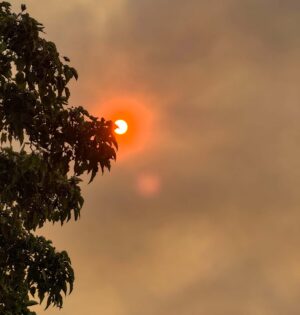 Western provinces and the East Coast should remain on alert for the possibility of more wildfire activity throughout the rest of summer, based on the latest federal government update. Wide swaths of B.C. and the prairie provinces are expected to be drier and hotter than normal. Federal government forecasters also see above-average seasonal temperatures for most of the country over the next three months. Typically in the more northern regions, fire activity starts to wind down around September as cooler weather sets in and the days grow shorter. Not this year. Federal bureaucrats said there’s a high likelihood that the large fires currently burning will continue well into the fall amid the higher temperatures. …Emergency Management Minister Eleanor Olszewski said “it’s been a really hot and dry summer and this has of course contributed to above-normal fire activity in BC, Manitoba, Saskatchewan and Newfoundland. New Brunswick and Nova Scotia.”
Western provinces and the East Coast should remain on alert for the possibility of more wildfire activity throughout the rest of summer, based on the latest federal government update. Wide swaths of B.C. and the prairie provinces are expected to be drier and hotter than normal. Federal government forecasters also see above-average seasonal temperatures for most of the country over the next three months. Typically in the more northern regions, fire activity starts to wind down around September as cooler weather sets in and the days grow shorter. Not this year. Federal bureaucrats said there’s a high likelihood that the large fires currently burning will continue well into the fall amid the higher temperatures. …Emergency Management Minister Eleanor Olszewski said “it’s been a really hot and dry summer and this has of course contributed to above-normal fire activity in BC, Manitoba, Saskatchewan and Newfoundland. New Brunswick and Nova Scotia.”

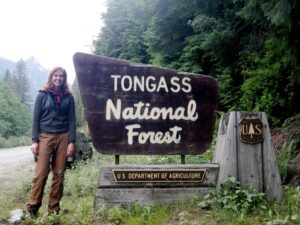 KLAWOCK, Alaska — Steinway pianos have a particular sound. …The secret to the sound isn’t merely Steinway’s skilled craftsmen—who’ve been using the same methods since 1853—but the specialized wood they use for the soundboards. It comes from the Tongass National Forest in Alaska. Unfortunately, a broken promise from the federal government will soon stop the music. …In 2016 the U.S. Department of Agriculture created a management plan that promised the availability of old-growth timber from the Tongass annually on a fixed schedule. …Not only has the Forest Service never met the timber-sale goals outlined in their management plan, in the past four years it offered less than 10% of the annual needs for the industry. …An executive order from President Trump… and a lawsuit we filed against the USDA earlier this year haven’t been enough to get the Forest Service to stop starving the industry. [to access the full story a WSJ subscription is required]
KLAWOCK, Alaska — Steinway pianos have a particular sound. …The secret to the sound isn’t merely Steinway’s skilled craftsmen—who’ve been using the same methods since 1853—but the specialized wood they use for the soundboards. It comes from the Tongass National Forest in Alaska. Unfortunately, a broken promise from the federal government will soon stop the music. …In 2016 the U.S. Department of Agriculture created a management plan that promised the availability of old-growth timber from the Tongass annually on a fixed schedule. …Not only has the Forest Service never met the timber-sale goals outlined in their management plan, in the past four years it offered less than 10% of the annual needs for the industry. …An executive order from President Trump… and a lawsuit we filed against the USDA earlier this year haven’t been enough to get the Forest Service to stop starving the industry. [to access the full story a WSJ subscription is required]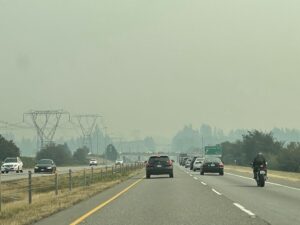 Road closures, evacuations, travel chaos and stern warnings from officials have become fixtures of Canada’s wildfire season. But as the country goes through its second-worst burn on record, the blazes come with a twist: few are coming from the western provinces. Instead, the worst of the fires have been concentrated in the prairie provinces and the Atlantic region, with bone-dry conditions upending how Canada responds to a threat that is only likely to grow as the climate warms. Experts say the shift serves as a stark reminder that the risk of disaster is present across the thickly forested nation. …“We had fire everywhere,” said Paul Kovacs, at the Institute for Catastrophic Loss Reduction at Western University. “And so for the first time, we had a different thought about wildfires as a country. …This is a national issue. This can show up anywhere.”
Road closures, evacuations, travel chaos and stern warnings from officials have become fixtures of Canada’s wildfire season. But as the country goes through its second-worst burn on record, the blazes come with a twist: few are coming from the western provinces. Instead, the worst of the fires have been concentrated in the prairie provinces and the Atlantic region, with bone-dry conditions upending how Canada responds to a threat that is only likely to grow as the climate warms. Experts say the shift serves as a stark reminder that the risk of disaster is present across the thickly forested nation. …“We had fire everywhere,” said Paul Kovacs, at the Institute for Catastrophic Loss Reduction at Western University. “And so for the first time, we had a different thought about wildfires as a country. …This is a national issue. This can show up anywhere.” The Mount Underwood fire near Port Alberni wasn’t your typical Vancouver Island blaze. But what is normal is changing. Thanks to droughts and heat waves, tiny fires that crews were once able to extinguish in a matter of hours are now ballooning into major blazes. Historically, fires have been nearly non-existent in coastal B.C., and the playbook for putting them out has been simple: Find fire. Spray water on it. Dig up hot spots. Case closed. This “direct attack” was possible because of the slow speed at which fires grow in coastal ecosystems. But the Mount Underwood fire, which ignited along the road connecting Port Alberni to Bamfield, spread rapidly, burning as a Rank 5 fire, with flames rising into the crowns of trees and up the mountainside. “In the seven years I’ve worked for the Coastal Fire Centre, I don’t think I’ve seen a fire like this on Vancouver Island,” Julia Caranci told CBC.
The Mount Underwood fire near Port Alberni wasn’t your typical Vancouver Island blaze. But what is normal is changing. Thanks to droughts and heat waves, tiny fires that crews were once able to extinguish in a matter of hours are now ballooning into major blazes. Historically, fires have been nearly non-existent in coastal B.C., and the playbook for putting them out has been simple: Find fire. Spray water on it. Dig up hot spots. Case closed. This “direct attack” was possible because of the slow speed at which fires grow in coastal ecosystems. But the Mount Underwood fire, which ignited along the road connecting Port Alberni to Bamfield, spread rapidly, burning as a Rank 5 fire, with flames rising into the crowns of trees and up the mountainside. “In the seven years I’ve worked for the Coastal Fire Centre, I don’t think I’ve seen a fire like this on Vancouver Island,” Julia Caranci told CBC.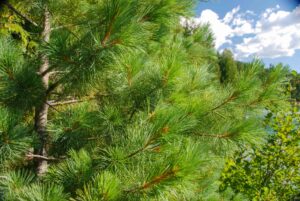 Over 70,000 new trees have been planted in Narrow Hills Provincial Park after the destructive Shoe Fire ripped through the area in May. The park, about 130 kilometres northeast of Prince Albert, Sask., is home to Gem Lakes and Lost Echo campgrounds, which remained closed for the season due to the wildfire. “There was a lot of enthusiasm to get the new life going back in the forest,” Pat MacKasey, a provincial park forest ecologist. MacKasey has been the supervisor of a five-person crew who have planted 73,080 Jack pine and white spruce trees since July. Trees have been planted in an area in Pine Lake that had previously been wiped out by a windstorm in the 1990s, he said. MacKasey says regrowth after that storm was slow, but new trees were eventually planted again in 2002 once forest health improved.
Over 70,000 new trees have been planted in Narrow Hills Provincial Park after the destructive Shoe Fire ripped through the area in May. The park, about 130 kilometres northeast of Prince Albert, Sask., is home to Gem Lakes and Lost Echo campgrounds, which remained closed for the season due to the wildfire. “There was a lot of enthusiasm to get the new life going back in the forest,” Pat MacKasey, a provincial park forest ecologist. MacKasey has been the supervisor of a five-person crew who have planted 73,080 Jack pine and white spruce trees since July. Trees have been planted in an area in Pine Lake that had previously been wiped out by a windstorm in the 1990s, he said. MacKasey says regrowth after that storm was slow, but new trees were eventually planted again in 2002 once forest health improved. The number and severity of wildfire damage claims are increasing partly because fire seasons are longer with more hectares burned, according to IBC spokesperson Adam Sutherland. “As we see the frequency and severity of claims growing, that’s putting pressure on premiums. “We know the risk is only going to grow. Insurance puts a price on risk. That’s why it’s paramount that we do much, much more as a society to reduce that, to better fireproof our communities and better protect our homes.” He said in addition to government action to reduce fire danger in the forests, residents need more incentives to protect their properties. “But then we also need to rethink our building codes and how we are developing our communities in the first place. That means moving away from wood shingles, wood roofs. No more vinyl siding. We need non-combustible materials on homes and interface fire zones for all new development.”
The number and severity of wildfire damage claims are increasing partly because fire seasons are longer with more hectares burned, according to IBC spokesperson Adam Sutherland. “As we see the frequency and severity of claims growing, that’s putting pressure on premiums. “We know the risk is only going to grow. Insurance puts a price on risk. That’s why it’s paramount that we do much, much more as a society to reduce that, to better fireproof our communities and better protect our homes.” He said in addition to government action to reduce fire danger in the forests, residents need more incentives to protect their properties. “But then we also need to rethink our building codes and how we are developing our communities in the first place. That means moving away from wood shingles, wood roofs. No more vinyl siding. We need non-combustible materials on homes and interface fire zones for all new development.”
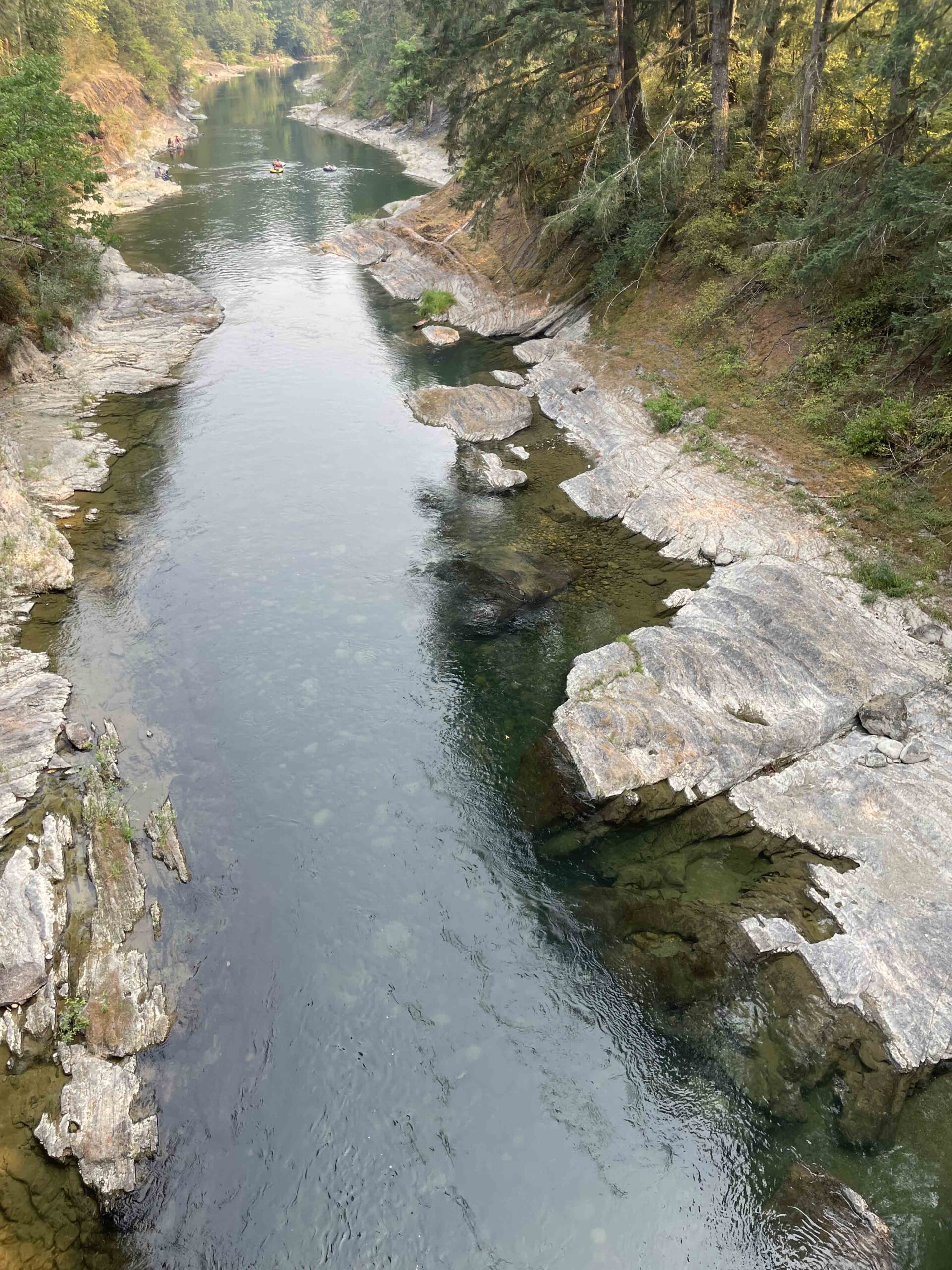 Cowichan Lake had just 16.5 per cent water storage capacity as of Aug. 13 as the recent hot spell, which saw temperatures in the region go above 30C, began to die down. Brian Houle, environment manager at the Domtar Crofton mill, which owns and operates the weir at Lake Cowichan, said the regulators of the watershed decided to reduce water flows from the lake over the weir to 4.5 cubic metres per second beginning on Aug. 13. He said the flow reduction will be done in two stages, dropping to 5.0 cms on Aug. 13 and then to 4.5 cms on Aug. 14 and that flow will hold until the rainfall returns this fall. …Houle said that, as water flows are reduced to the river, Domtar will have qualified professionals in the river helping to salvage fish stranded in pools, as well as measuring water quality.
Cowichan Lake had just 16.5 per cent water storage capacity as of Aug. 13 as the recent hot spell, which saw temperatures in the region go above 30C, began to die down. Brian Houle, environment manager at the Domtar Crofton mill, which owns and operates the weir at Lake Cowichan, said the regulators of the watershed decided to reduce water flows from the lake over the weir to 4.5 cubic metres per second beginning on Aug. 13. He said the flow reduction will be done in two stages, dropping to 5.0 cms on Aug. 13 and then to 4.5 cms on Aug. 14 and that flow will hold until the rainfall returns this fall. …Houle said that, as water flows are reduced to the river, Domtar will have qualified professionals in the river helping to salvage fish stranded in pools, as well as measuring water quality.
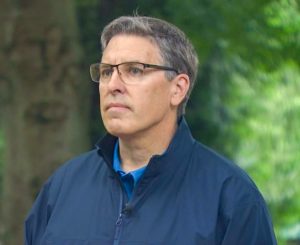
 A powerful documentary that addresses BC’s escalating wildfire crisis and the urgent need for solutions will be shown tonight in Williams Lake. “BC Is Burning” was written and produced by retired forester Murray Wilson who has over 4 decades of experience in wildfire suppression and forest management. “In August 2024 I started filming mainly around the Interior of BC.” Wilson said, ” I didn’t do any filming in the Williams Lake area but Central Chilcotin Rehabilitation Ltd. had some excellent videos and they very graciously gave me some of their footage from around the Williams Lake area as well as Percy Guichon who is also in the documentary.” …So far the documentary has been shown in Kelowna, Vernon, Merritt, Kamloops, and Williams Lake tonight (August 19) then it will be in Nakusp and on to Castlegar. A 20 minute Q & A with Wilson and Josh Prestie, Regional Executive Director for the Ministry of Forests will follow the Williams Lake show.
A powerful documentary that addresses BC’s escalating wildfire crisis and the urgent need for solutions will be shown tonight in Williams Lake. “BC Is Burning” was written and produced by retired forester Murray Wilson who has over 4 decades of experience in wildfire suppression and forest management. “In August 2024 I started filming mainly around the Interior of BC.” Wilson said, ” I didn’t do any filming in the Williams Lake area but Central Chilcotin Rehabilitation Ltd. had some excellent videos and they very graciously gave me some of their footage from around the Williams Lake area as well as Percy Guichon who is also in the documentary.” …So far the documentary has been shown in Kelowna, Vernon, Merritt, Kamloops, and Williams Lake tonight (August 19) then it will be in Nakusp and on to Castlegar. A 20 minute Q & A with Wilson and Josh Prestie, Regional Executive Director for the Ministry of Forests will follow the Williams Lake show.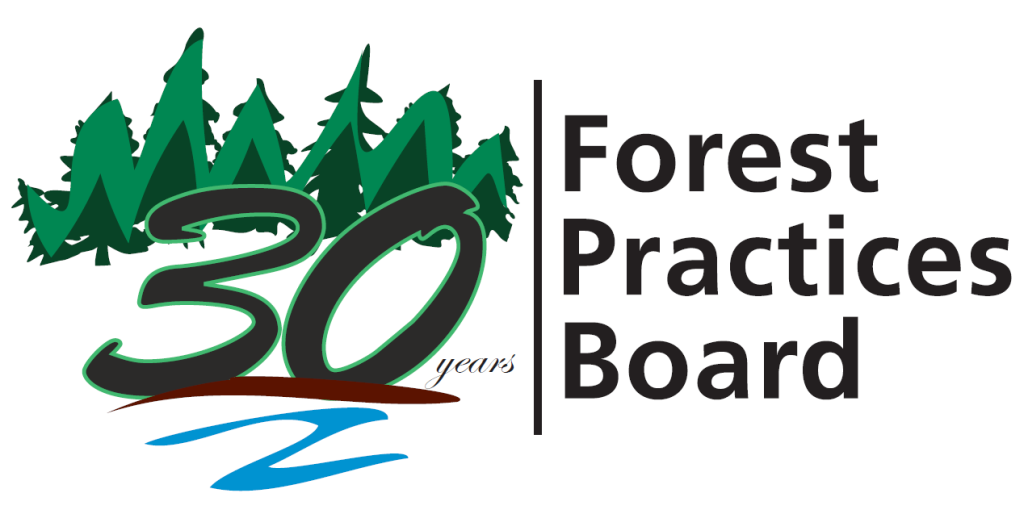

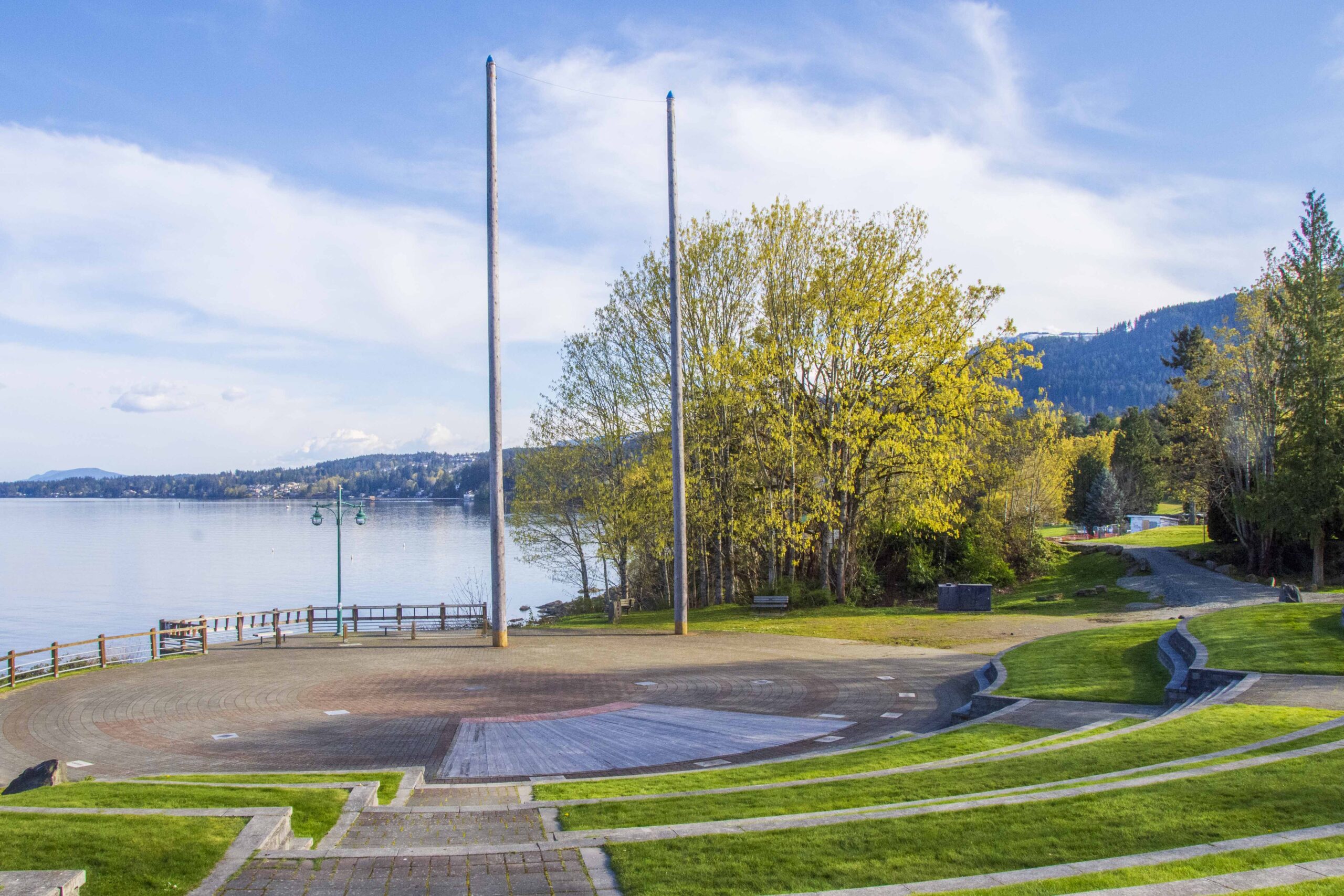 …It’s a rare sight today to see a spar tree in a timber harvesting area, but you can see them at any loggers’ sports shows. This year locals will have a chance to see climbers in action on Sunday, Sept. 14 at the Transfer Beach Amphitheatre. Just a couple of weeks ago the state of the two spar poles at the amphitheatre was in question. …Dave MacLeod from Husky Forest Service, a professional tree climber as well as a loggers’ sports tree climber, said instead of destroying the trees, they could be taken out to find out where the rot ends. His suggestion was accepted and the trees were taken out by RKM Cranes on July 30 and laid down to be examined. MacLeod did tests at various lengths of the trees and it was determined that the rot was up 10 feet from the bottom, so 11 feet was cut off.
…It’s a rare sight today to see a spar tree in a timber harvesting area, but you can see them at any loggers’ sports shows. This year locals will have a chance to see climbers in action on Sunday, Sept. 14 at the Transfer Beach Amphitheatre. Just a couple of weeks ago the state of the two spar poles at the amphitheatre was in question. …Dave MacLeod from Husky Forest Service, a professional tree climber as well as a loggers’ sports tree climber, said instead of destroying the trees, they could be taken out to find out where the rot ends. His suggestion was accepted and the trees were taken out by RKM Cranes on July 30 and laid down to be examined. MacLeod did tests at various lengths of the trees and it was determined that the rot was up 10 feet from the bottom, so 11 feet was cut off.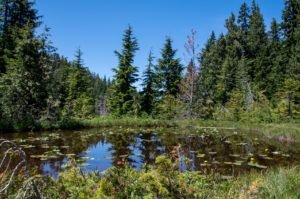 Trees are valuable components of the Canadian ecosystem and natural instruments of carbon storage and sequestration. A tree’s growth is controlled by regional climate, including growing season length and air temperature. It is also impacted by local hydroclimate; water and temperature variations that occur on a smaller scale. Black spruce trees are common within the boreal landscape of North America, including within fen wetlands. There is limited research on black spruce growth in fens, and how the unique hydroclimate of fens may impact tree growth in a changing climate. Tree core and ring samples were collected from both sites and placed within a microscope slide scanner. This allowed key tree growth characteristics to be identified on a cellular level. Correlation analysis was conducted between these growth characteristics and long-term climate data to determine the relationship between the two variables.
Trees are valuable components of the Canadian ecosystem and natural instruments of carbon storage and sequestration. A tree’s growth is controlled by regional climate, including growing season length and air temperature. It is also impacted by local hydroclimate; water and temperature variations that occur on a smaller scale. Black spruce trees are common within the boreal landscape of North America, including within fen wetlands. There is limited research on black spruce growth in fens, and how the unique hydroclimate of fens may impact tree growth in a changing climate. Tree core and ring samples were collected from both sites and placed within a microscope slide scanner. This allowed key tree growth characteristics to be identified on a cellular level. Correlation analysis was conducted between these growth characteristics and long-term climate data to determine the relationship between the two variables.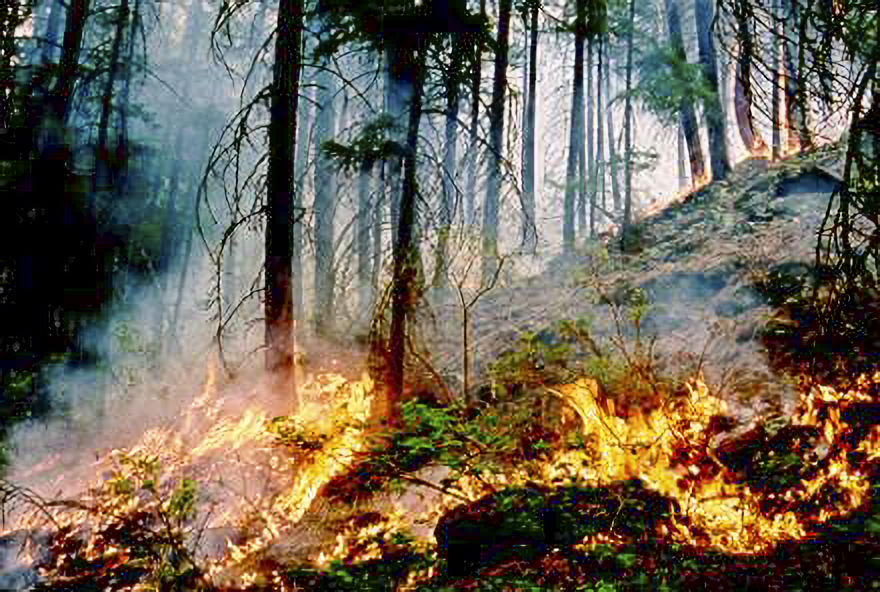 The historic wildfires that ripped through Quebec in 2023, destroying millions of hectares of forest and impacting thousands of people, is estimated to have cost over $8 billion. That’s according to a new provincially funded study published Wednesday by Nada Conseils — a climate action consultancy firm — highlighting the impacts and collective costs of the fires on citizens, governments, businesses and ecosystems. According to SOPFEU, the agency responsible for wildfire prevention and suppression in Quebec, the 2023 wildfire season was the worst in over 100 years with 713 fires — 99.9 per cent of which were caused by lightening — burning 4.3 million hectares of forest. …For governments, much of the costs incurred stemmed from firefighting operations, emergency services including evacuations and housing evacuees, and financial assistance programs. …The report notes that some of the most significant costs for citizens were linked to property damage, as well as financial impacts related to lost income and increased expenses.
The historic wildfires that ripped through Quebec in 2023, destroying millions of hectares of forest and impacting thousands of people, is estimated to have cost over $8 billion. That’s according to a new provincially funded study published Wednesday by Nada Conseils — a climate action consultancy firm — highlighting the impacts and collective costs of the fires on citizens, governments, businesses and ecosystems. According to SOPFEU, the agency responsible for wildfire prevention and suppression in Quebec, the 2023 wildfire season was the worst in over 100 years with 713 fires — 99.9 per cent of which were caused by lightening — burning 4.3 million hectares of forest. …For governments, much of the costs incurred stemmed from firefighting operations, emergency services including evacuations and housing evacuees, and financial assistance programs. …The report notes that some of the most significant costs for citizens were linked to property damage, as well as financial impacts related to lost income and increased expenses.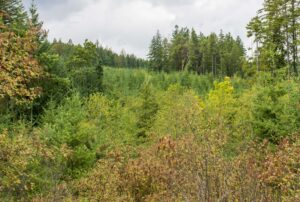 LAKE HURON, Ontario — Jenifer Brousseau often picks berries and traditional medicines in the bush around her community in northeastern Ontario. But in recent years, Brousseau and many others from Serpent River have been concerned about the forestry industry’s use of herbicides that contain the chemical glyphosate. …Environmental groups — including Friends of the Earth Canada, the David Suzuki Foundation, Safe Food Matters and Environmental Defence Canada — have launched a court challenge of Health Canada’s conclusions on glyphosate. …Some small municipalities in northern Ontario have also started to petition the province in their effort to get the ban. …Fred Pinto, an adjunct professor of forestry at the University of Toronto said herbicides are just one tool used by forestry companies to manage vegetation. Pinto said herbicide spraying is often done using aircraft in areas that have little to no road access.
LAKE HURON, Ontario — Jenifer Brousseau often picks berries and traditional medicines in the bush around her community in northeastern Ontario. But in recent years, Brousseau and many others from Serpent River have been concerned about the forestry industry’s use of herbicides that contain the chemical glyphosate. …Environmental groups — including Friends of the Earth Canada, the David Suzuki Foundation, Safe Food Matters and Environmental Defence Canada — have launched a court challenge of Health Canada’s conclusions on glyphosate. …Some small municipalities in northern Ontario have also started to petition the province in their effort to get the ban. …Fred Pinto, an adjunct professor of forestry at the University of Toronto said herbicides are just one tool used by forestry companies to manage vegetation. Pinto said herbicide spraying is often done using aircraft in areas that have little to no road access.
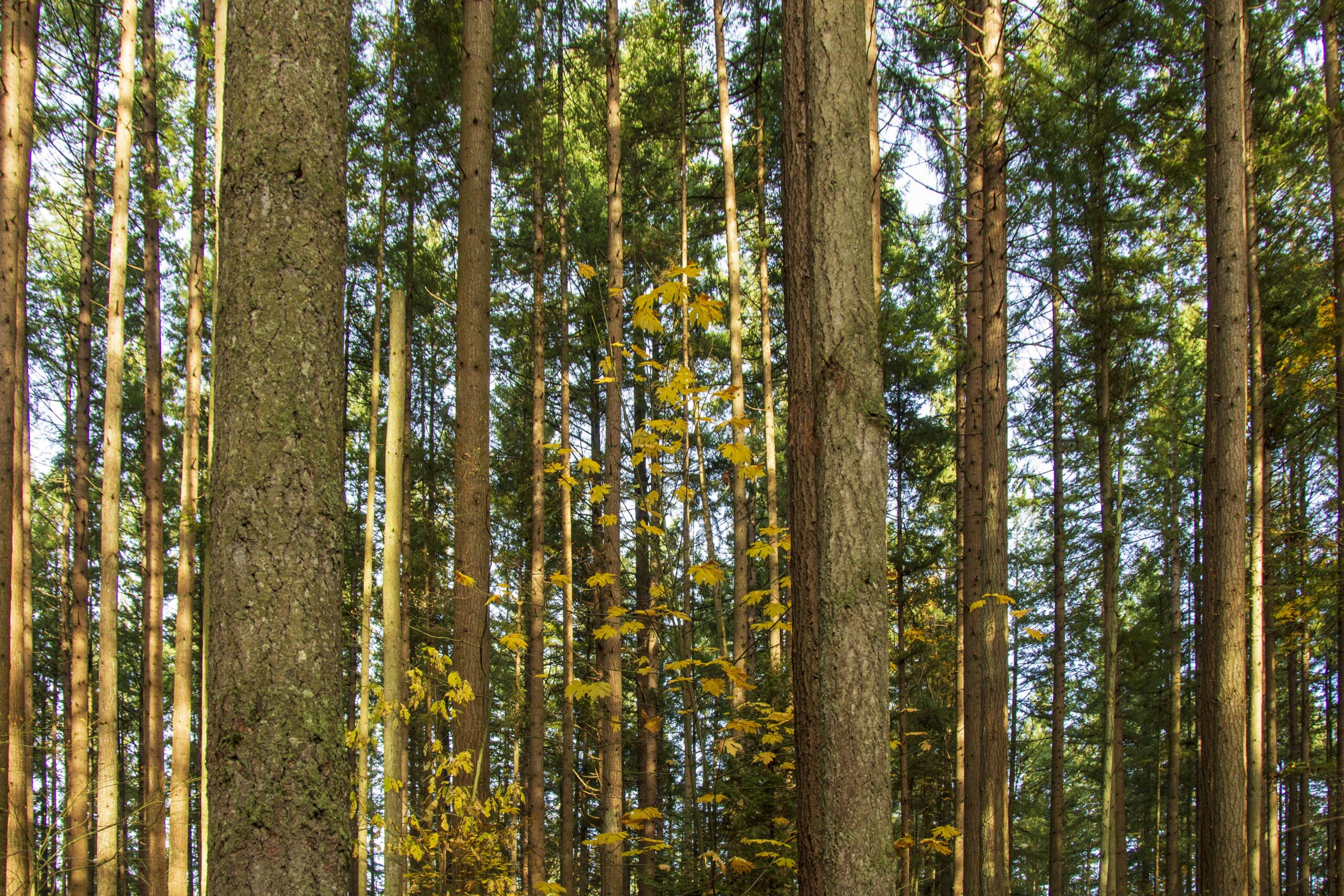 The odds of high-severity wildfire were nearly one-and-a-half times higher on industrial private land than on publicly owned forests, a new study found. Forests managed by timber companies were more likely to exhibit the conditions that megafires love—dense stands of regularly spaced trees with continuous vegetation connecting the understory to the canopy. The research, led by the University of Utah, University of California, Berkeley, and the United States Forest Service, is the first to identify how extreme weather conditions and forest management practices jointly impact fire severity. Leveraging a unique lidar dataset, the authors created three-dimensional maps of public and private forests before five wildfires burned 1.1 million acres in the northern Sierra Nevada, California. …Although the study demonstrates that private industrial lands fare worse, both private and public agencies have much room for improvement to protect our nation’s forests.
The odds of high-severity wildfire were nearly one-and-a-half times higher on industrial private land than on publicly owned forests, a new study found. Forests managed by timber companies were more likely to exhibit the conditions that megafires love—dense stands of regularly spaced trees with continuous vegetation connecting the understory to the canopy. The research, led by the University of Utah, University of California, Berkeley, and the United States Forest Service, is the first to identify how extreme weather conditions and forest management practices jointly impact fire severity. Leveraging a unique lidar dataset, the authors created three-dimensional maps of public and private forests before five wildfires burned 1.1 million acres in the northern Sierra Nevada, California. …Although the study demonstrates that private industrial lands fare worse, both private and public agencies have much room for improvement to protect our nation’s forests.
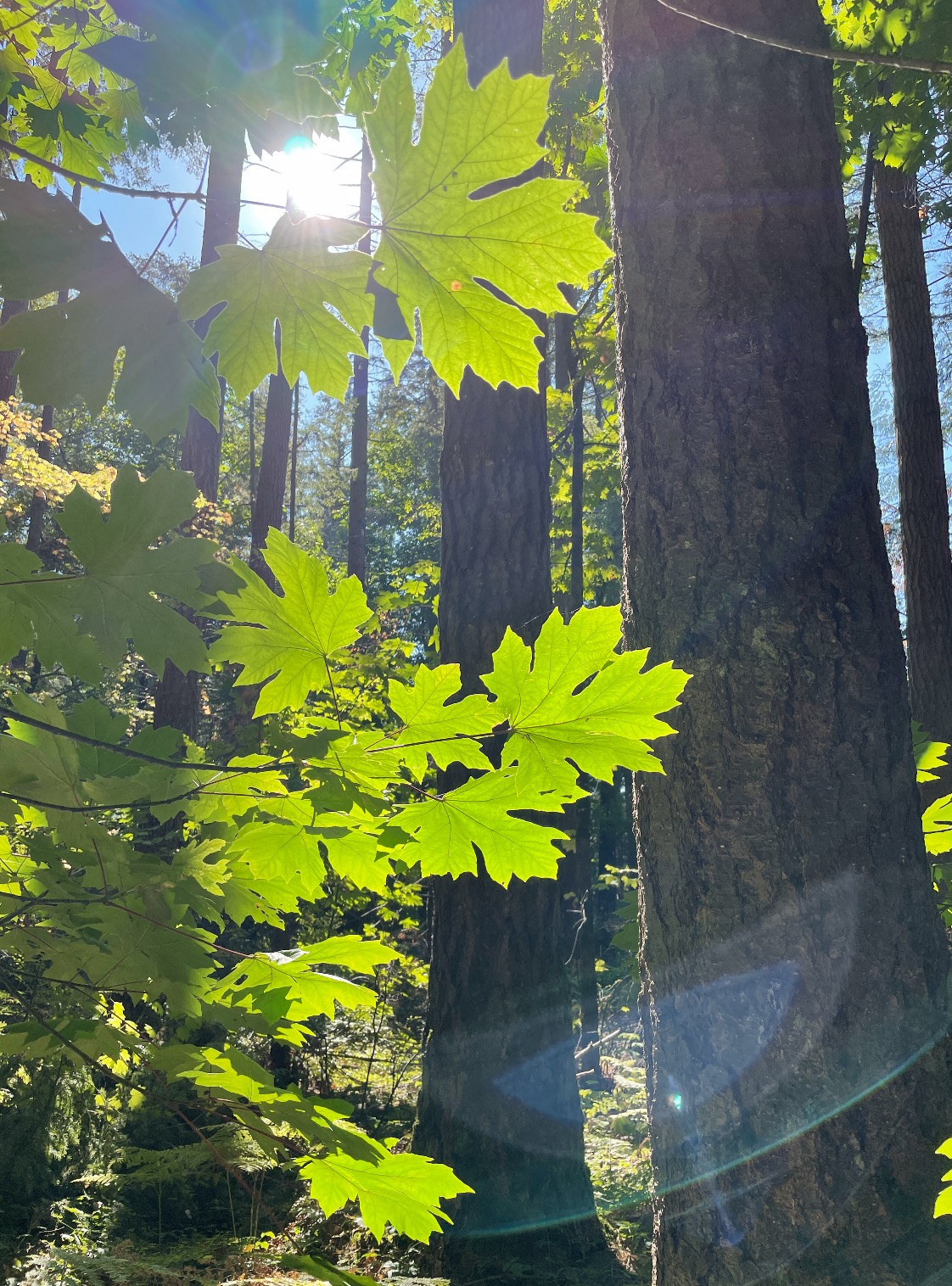 Photographs of forests in the western U.S. from the mid-1800s show a starkly different reality compared to today, says Paul Hessburg, an ecologist at the University of Washington. …Today, many of these forests are overgrown and dominated by younger trees. Back then, they were typically more open — “park-like”. …Fire played an integral role — perhaps the integral role — in shaping these ecosystems. …Hessburg and others see the rejection of active management in part as a response to the “legacy” of commercial, industrial-scale logging of natural forests. Those rampant harvests often took the oldest and largest trees in the U.S., before a mix of science, policy and advocacy for species like the northern spotted owl caused a shift away from the practice in the 1990s. …“We created a climate that’s hostile to people and health and forests,” he says. What’s critical now is finding ways to adjust, for both ourselves and our forests.
Photographs of forests in the western U.S. from the mid-1800s show a starkly different reality compared to today, says Paul Hessburg, an ecologist at the University of Washington. …Today, many of these forests are overgrown and dominated by younger trees. Back then, they were typically more open — “park-like”. …Fire played an integral role — perhaps the integral role — in shaping these ecosystems. …Hessburg and others see the rejection of active management in part as a response to the “legacy” of commercial, industrial-scale logging of natural forests. Those rampant harvests often took the oldest and largest trees in the U.S., before a mix of science, policy and advocacy for species like the northern spotted owl caused a shift away from the practice in the 1990s. …“We created a climate that’s hostile to people and health and forests,” he says. What’s critical now is finding ways to adjust, for both ourselves and our forests. 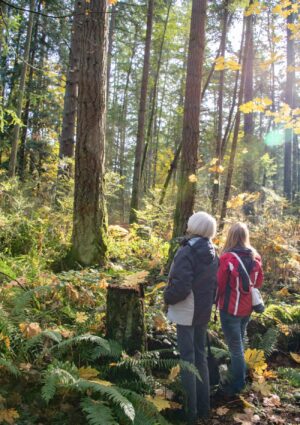 PENNSYLVANIA — The Allegheny National Forest is set to ramp up logging by more than 10% this year as part of a push from President Donald Trump to boost domestic lumber supplies. The move has sparked fierce debate between environmentalists and pro-logging groups who disagree on cutting trees to reduce wildfire risks or improve forest health. In the coming fiscal year, the state’s only national forest is set to sell 45 million board feet, an over 12% increase from this fiscal year, said Alisen Downs, for the Allegheny National Forest. …Allegheny National Forest has proposed a five-year plan starting next fiscal year, Downs said.“I think a slow and steady progress toward that increase is probably the best approach,” said Julia McCray, of the Allegheny Forest Alliance, which includes local officials and people from the timber industry. …While next year’s logging will be an increase… it’s not a historic high.
PENNSYLVANIA — The Allegheny National Forest is set to ramp up logging by more than 10% this year as part of a push from President Donald Trump to boost domestic lumber supplies. The move has sparked fierce debate between environmentalists and pro-logging groups who disagree on cutting trees to reduce wildfire risks or improve forest health. In the coming fiscal year, the state’s only national forest is set to sell 45 million board feet, an over 12% increase from this fiscal year, said Alisen Downs, for the Allegheny National Forest. …Allegheny National Forest has proposed a five-year plan starting next fiscal year, Downs said.“I think a slow and steady progress toward that increase is probably the best approach,” said Julia McCray, of the Allegheny Forest Alliance, which includes local officials and people from the timber industry. …While next year’s logging will be an increase… it’s not a historic high. 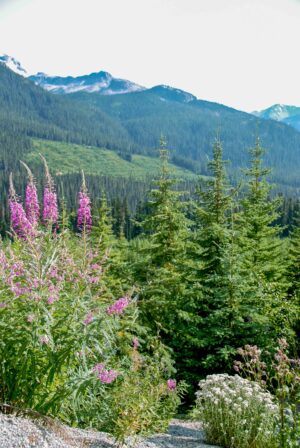 A budget crisis a century in the making is coming to a head as Oregon’s rural counties. The crisis originates with a compromise from the era of President Teddy Roosevelt and was prolonged by piecemeal solutions made during the Timber Wars of the 1990s. Now the president’s signature One Big Beautiful Bill removes a key funding source for Oregon’s timber counties. If nothing is done, rural counties could find themselves with no money to pay for sheriff’s departments or other essential needs. …Many rural Oregon counties once relied on a portion of revenue from trees logged on federal lands to cover the costs of essential services. That federal land doesn’t generate local property taxes… So the federal government started sharing a portion of its logging revenues with those counties. When those declined, federal lawmakers came up with the Secure Rural Schools program. …But Congress needs to regularly re-authorize the program.
A budget crisis a century in the making is coming to a head as Oregon’s rural counties. The crisis originates with a compromise from the era of President Teddy Roosevelt and was prolonged by piecemeal solutions made during the Timber Wars of the 1990s. Now the president’s signature One Big Beautiful Bill removes a key funding source for Oregon’s timber counties. If nothing is done, rural counties could find themselves with no money to pay for sheriff’s departments or other essential needs. …Many rural Oregon counties once relied on a portion of revenue from trees logged on federal lands to cover the costs of essential services. That federal land doesn’t generate local property taxes… So the federal government started sharing a portion of its logging revenues with those counties. When those declined, federal lawmakers came up with the Secure Rural Schools program. …But Congress needs to regularly re-authorize the program.
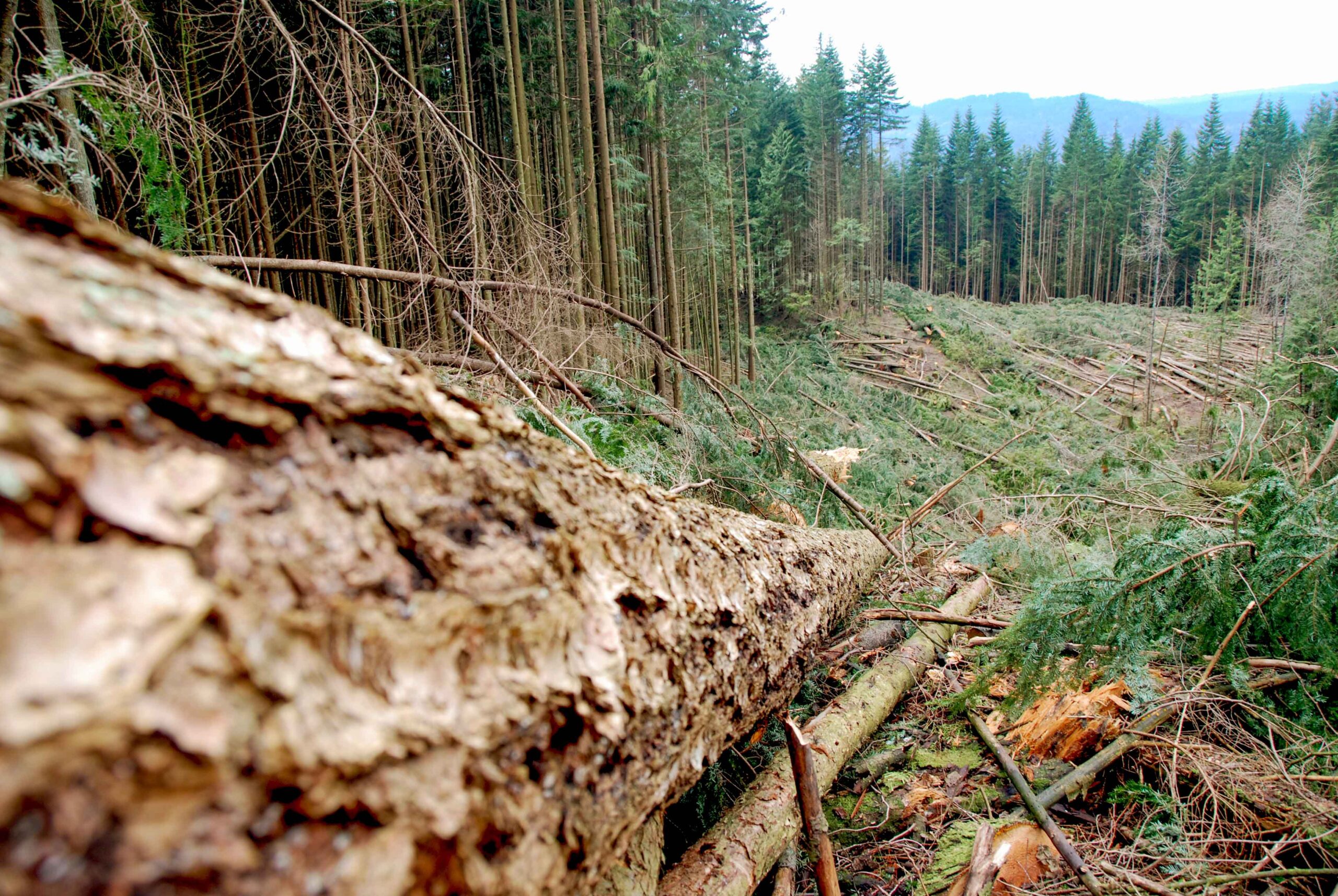 HELENA, Mont. — U.S. Forest Service Chief Tom Schultz and Montana Governor Greg Gianforte signed a historic Shared Stewardship Memorandum of Understanding, establishing a new framework between the U.S. Forest Service (USFS) and the State of Montana to advance forest restoration and reduce wildfire risk across the state. Montana’s Shared Stewardship Agreement expands collaborative efforts to accelerate active forest management, safeguard communities, and support sustainable timber production. “This agreement is exactly the kind of forward-leaning, state-driven leadership that President Trump and USDA have championed since day one,” said U.S. Secretary of Agriculture Brooke Rollins. “By cutting burdensome, unnecessary red tape and empowering Montana to lead, we’re proving that through real partnership, conservation and economic growth can go hand-in-hand. This partnership is just another example of our shared commitment to protect lives, livelihoods, and our forest resources — while creating opportunities for hardworking Americans.”
HELENA, Mont. — U.S. Forest Service Chief Tom Schultz and Montana Governor Greg Gianforte signed a historic Shared Stewardship Memorandum of Understanding, establishing a new framework between the U.S. Forest Service (USFS) and the State of Montana to advance forest restoration and reduce wildfire risk across the state. Montana’s Shared Stewardship Agreement expands collaborative efforts to accelerate active forest management, safeguard communities, and support sustainable timber production. “This agreement is exactly the kind of forward-leaning, state-driven leadership that President Trump and USDA have championed since day one,” said U.S. Secretary of Agriculture Brooke Rollins. “By cutting burdensome, unnecessary red tape and empowering Montana to lead, we’re proving that through real partnership, conservation and economic growth can go hand-in-hand. This partnership is just another example of our shared commitment to protect lives, livelihoods, and our forest resources — while creating opportunities for hardworking Americans.”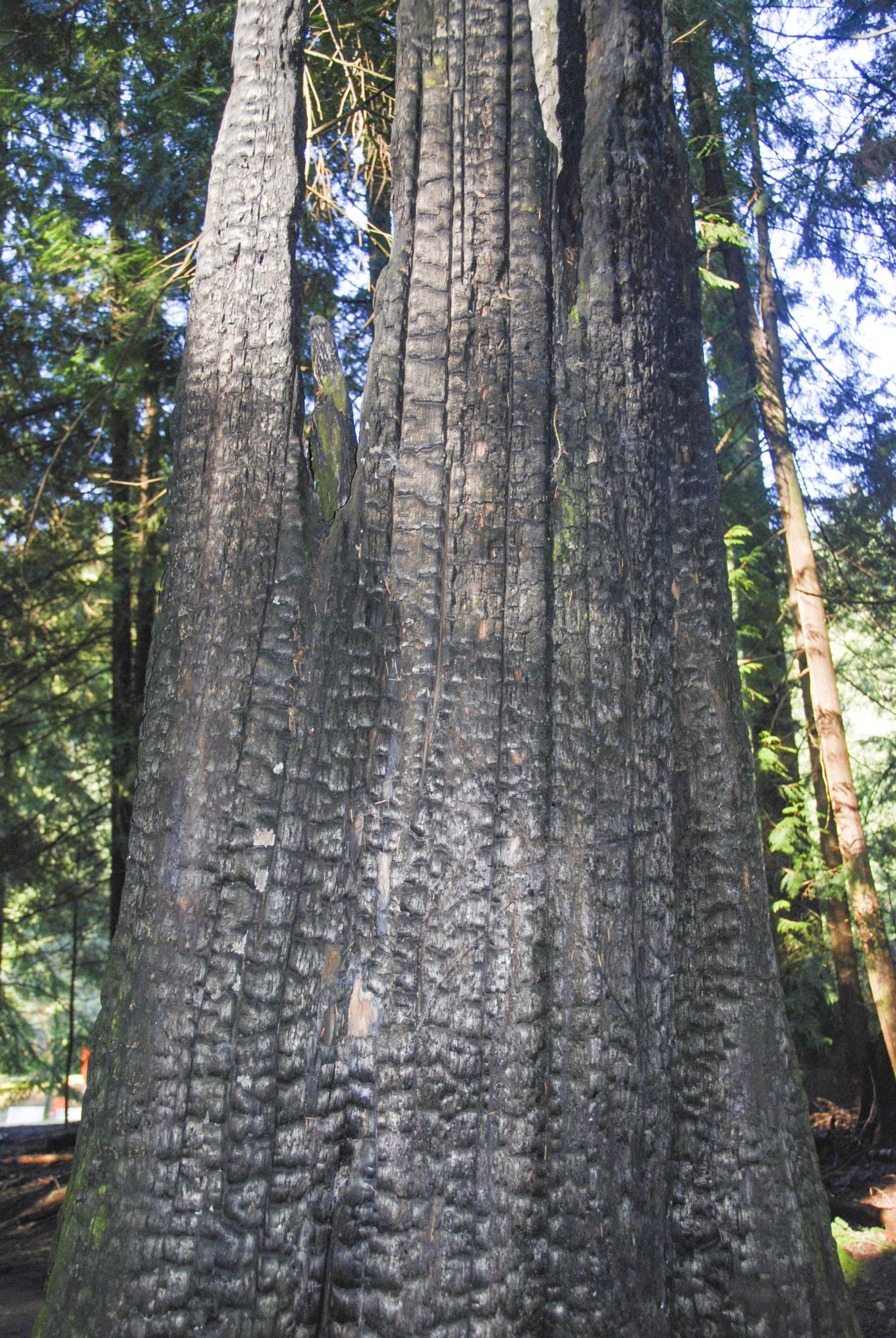 …a University of Delaware professor has found that there is something of value to be learned from what’s left behind in the remnants of a wildfire. The charred debris left in the wake of wildfires … is known as wildfire char. UD’s Pei Chiu, professor of civil, construction and environmental engineering, studies wildfire chars and the ways they just might prove useful in reducing methane, a powerful gas that traps heat in the atmosphere. Methane emissions come from many different sources, ranging from livestock manure to landfills and wastewater treatment plants. This work also informs his research on biochar — man-made chars created from leftover wood chips, rice husks, corn stover and other agricultural biomass — that can be used in soil amendments, stormwater treatment and other applications. Chiu shares five important facts about char — both natural (wildfire char) and manmade (biochar).
…a University of Delaware professor has found that there is something of value to be learned from what’s left behind in the remnants of a wildfire. The charred debris left in the wake of wildfires … is known as wildfire char. UD’s Pei Chiu, professor of civil, construction and environmental engineering, studies wildfire chars and the ways they just might prove useful in reducing methane, a powerful gas that traps heat in the atmosphere. Methane emissions come from many different sources, ranging from livestock manure to landfills and wastewater treatment plants. This work also informs his research on biochar — man-made chars created from leftover wood chips, rice husks, corn stover and other agricultural biomass — that can be used in soil amendments, stormwater treatment and other applications. Chiu shares five important facts about char — both natural (wildfire char) and manmade (biochar).  One of the key agreements for Amazon rainforest protection – the soy moratorium – has been suspended by Brazilian authorities, potentially opening up an area the size of Portugal to destruction by farmers. Coming less than three months before Brazil hosts the Cop30 climate summit in Belém, the news has shocked conservation groups, who say it is now more important than ever that consumers, supermarkets and traders stand up against Brazilian agribusiness groups that are using their growing political power to reverse past environmental gains. Brazil is the world’s biggest soya bean exporter. The legume … posed a huge deforestation threat to the Amazon rainforest until stakeholders voluntarily agreed to impose a moratorium and no longer source it from the region in 2006. …Greenpeace Brazil called the move a “terrible mistake”, which was the result of political pressure from the “regressive wings of agribusiness”…
One of the key agreements for Amazon rainforest protection – the soy moratorium – has been suspended by Brazilian authorities, potentially opening up an area the size of Portugal to destruction by farmers. Coming less than three months before Brazil hosts the Cop30 climate summit in Belém, the news has shocked conservation groups, who say it is now more important than ever that consumers, supermarkets and traders stand up against Brazilian agribusiness groups that are using their growing political power to reverse past environmental gains. Brazil is the world’s biggest soya bean exporter. The legume … posed a huge deforestation threat to the Amazon rainforest until stakeholders voluntarily agreed to impose a moratorium and no longer source it from the region in 2006. …Greenpeace Brazil called the move a “terrible mistake”, which was the result of political pressure from the “regressive wings of agribusiness”…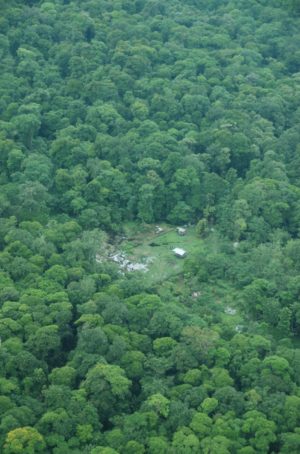 JAKARTA, Indonesia — The recreational vehicle industry is now the biggest consumer of tropical wood in the United States, UK-based NGO Earthsight and Indonesian NGO Auriga Nusantara said. They said evidence showed sheets of tropical “lauan” plywood found in Indonesia were likely being used in the floors, walls and ceilings of RVs produced by major brands like Jayco, Winnebago and Forest River. “Nature-loving RV owners will be horrified,” said Earthsight director Sam Lawson. …Indonesia has one of the world’s highest rates of deforestation linked to mining, farming and logging, and is accused of allowing firms to operate in Borneo with little oversight. …PT Kayu Lapis Asli Murni, sourced timber mostly from rainforest in areas the NGOs visited, half of which was then exported to US firms MJB Wood and Tumac Lumber in 2024, they said.
JAKARTA, Indonesia — The recreational vehicle industry is now the biggest consumer of tropical wood in the United States, UK-based NGO Earthsight and Indonesian NGO Auriga Nusantara said. They said evidence showed sheets of tropical “lauan” plywood found in Indonesia were likely being used in the floors, walls and ceilings of RVs produced by major brands like Jayco, Winnebago and Forest River. “Nature-loving RV owners will be horrified,” said Earthsight director Sam Lawson. …Indonesia has one of the world’s highest rates of deforestation linked to mining, farming and logging, and is accused of allowing firms to operate in Borneo with little oversight. …PT Kayu Lapis Asli Murni, sourced timber mostly from rainforest in areas the NGOs visited, half of which was then exported to US firms MJB Wood and Tumac Lumber in 2024, they said. The Forest Stewardship Council has allowed Asia Pulp & Paper — “one of the world’s most destructive forestry companies” — to resume its remedy process toward regaining certification it lost in 2007 for deforestation and land conflicts. Watchdog groups say the decision is premature because a legal review of APP’s links to Paper Excellence/Domtar, the biggest pulp and paper company in North America, is still unfinished. Critics warn the move could erode trust, enable greenwashing, and expose communities in conflict with APP-linked companies to further harm. NGOs are calling for the remedy process to be paused until the review is completed and for full transparency on corporate ownership and compliance.
The Forest Stewardship Council has allowed Asia Pulp & Paper — “one of the world’s most destructive forestry companies” — to resume its remedy process toward regaining certification it lost in 2007 for deforestation and land conflicts. Watchdog groups say the decision is premature because a legal review of APP’s links to Paper Excellence/Domtar, the biggest pulp and paper company in North America, is still unfinished. Critics warn the move could erode trust, enable greenwashing, and expose communities in conflict with APP-linked companies to further harm. NGOs are calling for the remedy process to be paused until the review is completed and for full transparency on corporate ownership and compliance. AUSTRALIA — The Victorian Government has
AUSTRALIA — The Victorian Government has